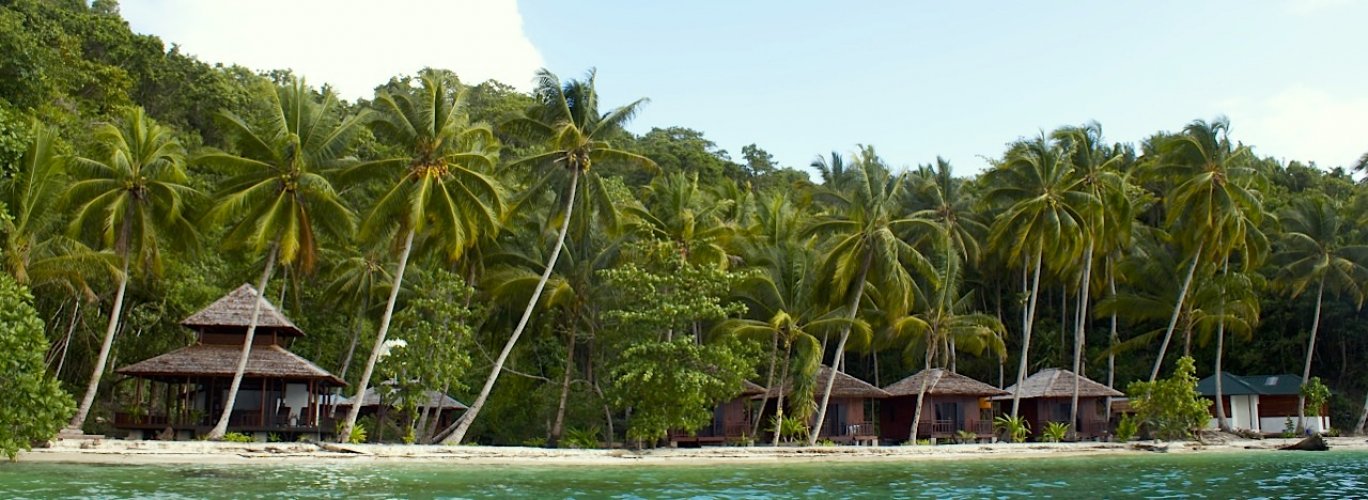Tour module round trip 8 days diving Raja Ampat - Arborek homestay
You will be picked up by boat in Sorong, Papua. You stay in a very simple homestay.
You do 3 dives per day and you have a choice of numerous (optional) excursions to, for example, the birds of Paradise, waterfalls or dragons.
Target prices
Let op!
Duiken via een homestay is eigenlijk uitsluitend geeschikt voor ervaren duikers met eigen duikuitrusting en een eigen buddy.
Arborek Dive shop
•Entrance fee Raja Ampat National park
-Transfer airport-Sorong harbour-Waigeo public ferry and local boat Waigeo-Arborek and vice versa
•Breakfast, lunch and dinner during your stay in Arborek
•Coffee, tea, water
•2 dives per day
•Complete diving-equipment (not advised, better bring own)
Not-included:
•Intercontinental and domestic flights
•Excursions
•Other drinks and meals
•Tips and personal expenses
•Travel and cancellation insurance
•Booking fee and contribution Calamiteitenfonds €30 per booking
•SGR contribution € 5 per person
•CO2 compensation € 22 per person
Arrival Sorong,on the ferry to Waigeo and the guesthouse

Day 2 to 7 (included) Diving at Raja Ampat

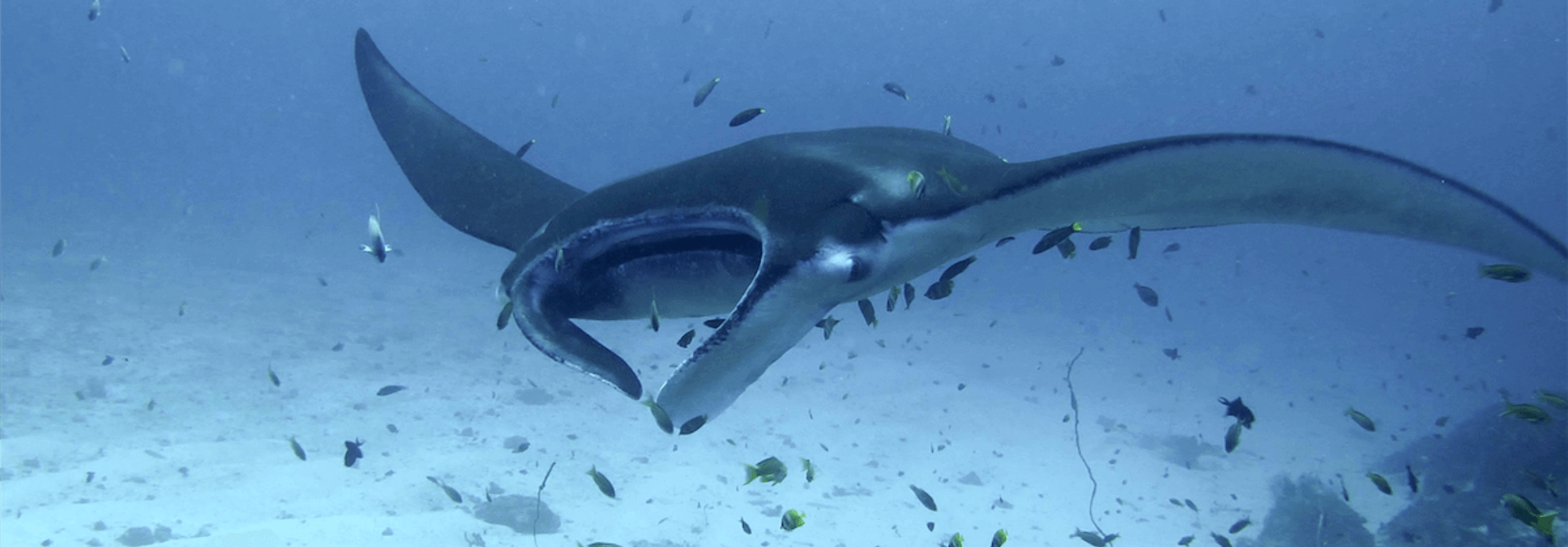
Diving package Arborek

Day 8 Back to Sorong

Mawar homestay - Arborek
Mawar Homestay lies at the western tip of Pulau Arborek and offers two private and one four-room bungalow on land, and three private beach bungalows which are over water at high tide. All have spectacular sunset views. Bedding in each room consists of mattresses on the floor with pillows, bolsters, sheets and mosquito nets and each room has a room light switch, power outlets and a small table. Bungalow verandahs have a table and bench seating and Mawar has also strung some net hammocks between the coconut palms and provides a beachside shelter with table and benches for relaxing at. Meals at Mawar Homestay are served in a sand floored dining shelter that also has sea views, and coffee, tea and drinking water are provided there free of charge. All guests share Mawar’s two room, concrete floored bathroom building. Both rooms have bucket bathing. A western style toilet is in one, and a raised squat toilet in the other. Arborek’s electricity supply operates from 6pm to 6am. The island receives a variable mobile phone signal, but a little exploration can usually find a place where a slow data connection can be supported. Mawar Homestay is on the outskirts of Arborek village where basic supplies and cold drinks can be purchased and diving is available at Arborek Dive Shop. English is spoken at Mawar Homestay. meer info more info Informations supplémentaires










Arborek-Raja Ampat
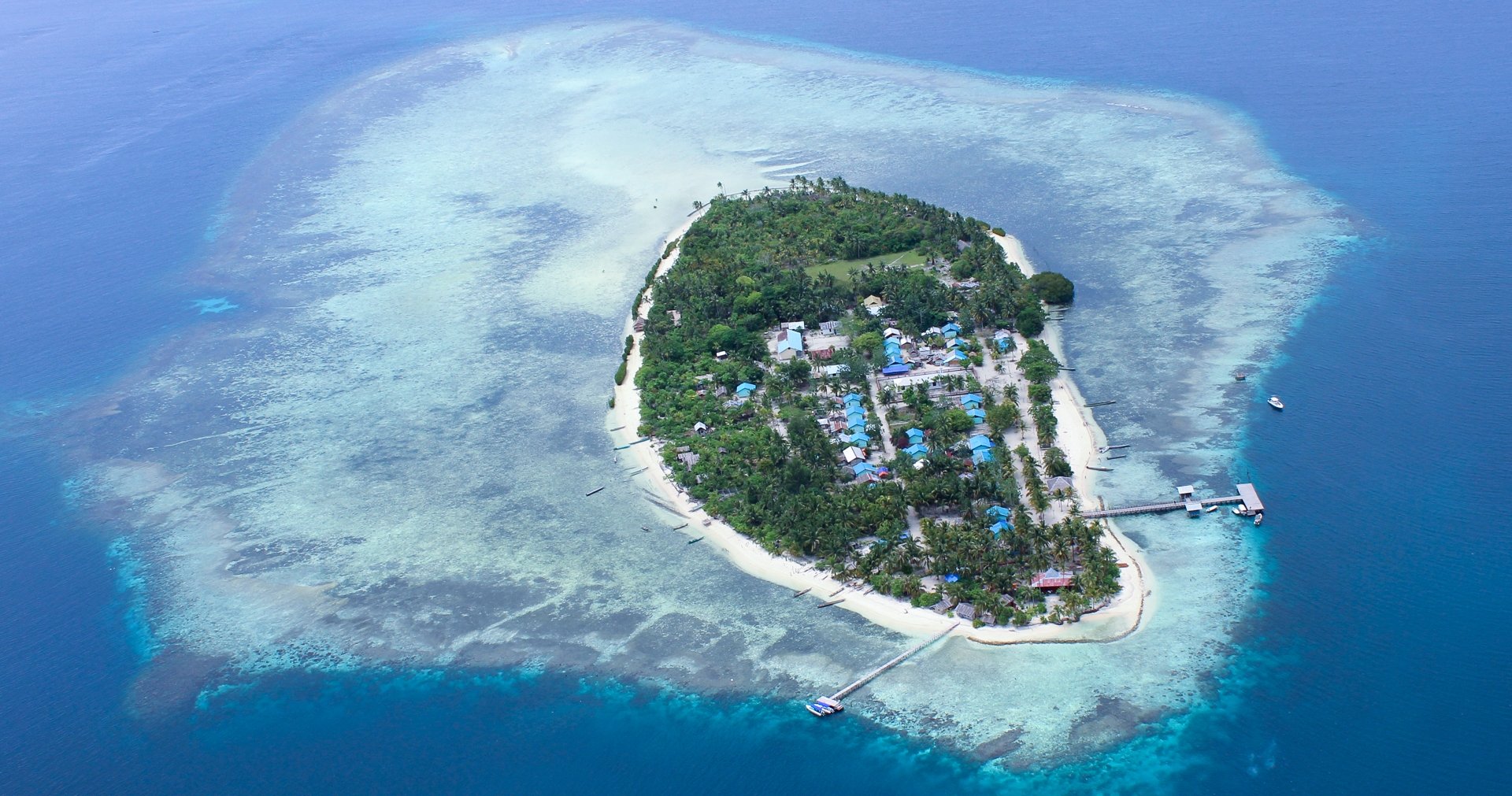
Arborek
Arborek is een piepklein eilandje in de Dampier Strait, noord Raja Ampat. Je loopt in een kwartier rond het eiland. Er is 1 restaurantje en een paar kleine winkeltjes waar je zelfs koud bier kunt kopen. Op het eilandje is de Arborek Diveshop gevestigd, waar je 2 duiken per dag kunt boeken (van te voren reserveren!). Bij de Arborek Jetty kun je fantastisch snorkelen.Raja Ampat

Raja Ampat
Raja Ampat is an archipelago in West Papua (former Irian Jaya) and consists of 610, mostly uninhabited islands. The four largest islands are Waigeo in the north, Salawati (southwest of Sorong), Batanta (north of Salawati) and Misool in the southwest. The name Raja Ampat is also based on these four islands and literally translated means "the four kings".Raja Ampat is a relatively unknown area in Indonesia, but this destination is well known among divers. This is due to the wide range of various fish species and fantastic coral reefs, varying from hard to soft coral. But the islands themselves are also impressive. The Raja Ampat Islands have quiet lagoons with crystal white sand and water that varies from bright green to bright blue.
Diving is especially popular in the Dampier Strait. Here you will find numerous dive spots with an incredible amount of coral and fish. Cape Kri, Blue Magic and Manta Point are real eye-catchers.
Misool is also loved for its wide variety of fish and coral.
Raja Ampat is open all year round, but from mid-July to mid-September you are more likely to experience rain and high waves. Misool is closed between mid-June and mid-September.
Raja Ampat has dozens of dive resorts and homestays. The homestays often use local diving schools, such as the Arborek dive shop. The more luxurious diving resorts offer not only more comfort, but also more safety. Sorido Bay resort, Raja Ampat Biodiversity and Papua Explorers are our favorites in the Dampier Strait, Papua Paradise Eco resort off Batanta Island. The Scuba Republic is an excellent middle class resort.
A fast public ferry runs twice a day between Sorong and Waisai on Waigeo Island. Waigeo also has an airport with a daily flight to Sorong.
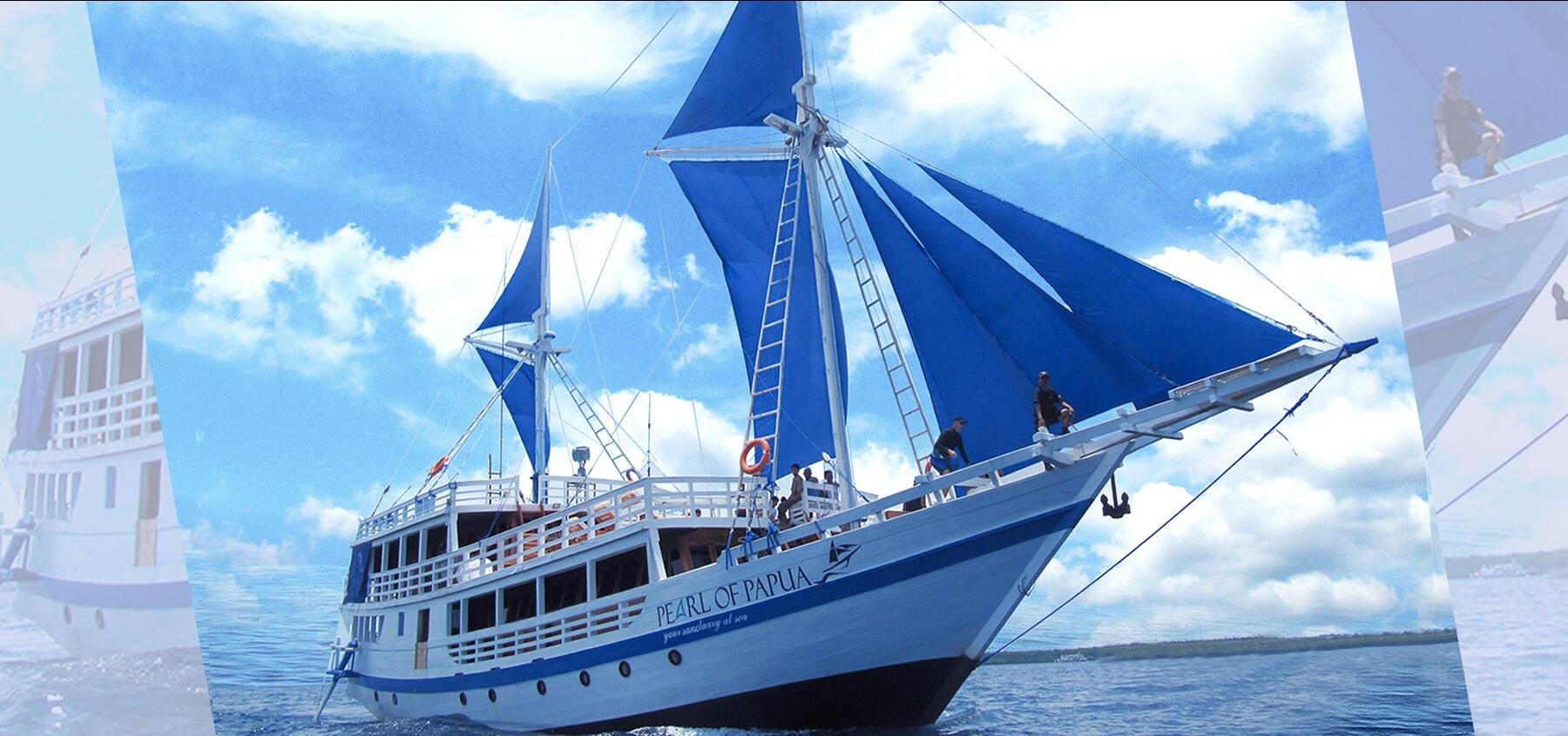
Liveaboards
Liveaboards usually offer weeklong dive cruises in northern Raja Ampat (Dampier Strait and the northern Wajag karst islands. Longer, often 10-day trips also cover the southern part around Misool. Most liveaboards operate Raja Ampat cruises between September and March April, then dock and sail in the waters around Komodo for the summer season.Video Raja Ampat snorkel cruise
Dive spots north Raja Ampat

Divie spots North Raja Ampat
These days you can dive and snorkel at will in the most beautiful area of Indonesia.Between November and March a diving- or a snorkelling trip at Manta Sandy is a must! But don’t forget to admire the seahorses, wobbegong sharks, barracudas and other wonderful fish above the marvellous healthy coral as well.
Besides diving and snorkelling you can book excursions to the birds of paradise or a traditional village on the spot. Or just chill out on the beach…

Cape Kri
One of the favorite dives, Cape Kri is Sordio Bay’s house reef and less than 3 minute by boat from Kri Eco Resort. This is the dive site that put Raja Ampat on the map when Dr Gerry Allen smashed his record for total number of fish species on a single tank dive: 374 different species!The world-record holding Cape Kri, with a record count of 374 different species in one dive counted by Dr. G. Allen, is just a 1 minute boat ride from our jetty. At the Northeast point of Kri island the currents sweep into a channel between Kri and the small island of Koh. At this point beneath waters churning in the current, huge schools of Big-eye trevallies, Barracudas and Snappers can be seen hanging over the drop-off. At the base of the reef at 38 meters an ancient snagged anchor rests next to a bommie with a dense school of Banded sweetlips. A large shallow coral garden crowns the reef top with blacktip reef sharks patrolling amongst the overlapping maze of hard corals with feeding hawksbill turtles. Car-sized Queensland groupers down to the diminutive ever-present pygmy seahorse can be seen on this phenomenal and always-surprising dive site! Dawn and dusk are feeding time so divers can experience this site at its awe-inspiring best.

Blue magic
Only 15 minutes from Kri Island, this small pinnacle has almost everythingFrom Wobbegong sharks to tiny 2cm Denise Pygmy seahorses. The reef top is covered in hard coral with some big coral heads and some tabling Acropora corals well over 3 metres across. There is a resident school of Big eye Trevallies and many large Barracuda. Green Turtles can be found here as well as Black Tips, White Tips and the occasional Grey Reef Sharks. If you are very lucky even a Giant Manta Ray. The magnificent dive ends with a blue water safety stop drifting over and away from the reef.
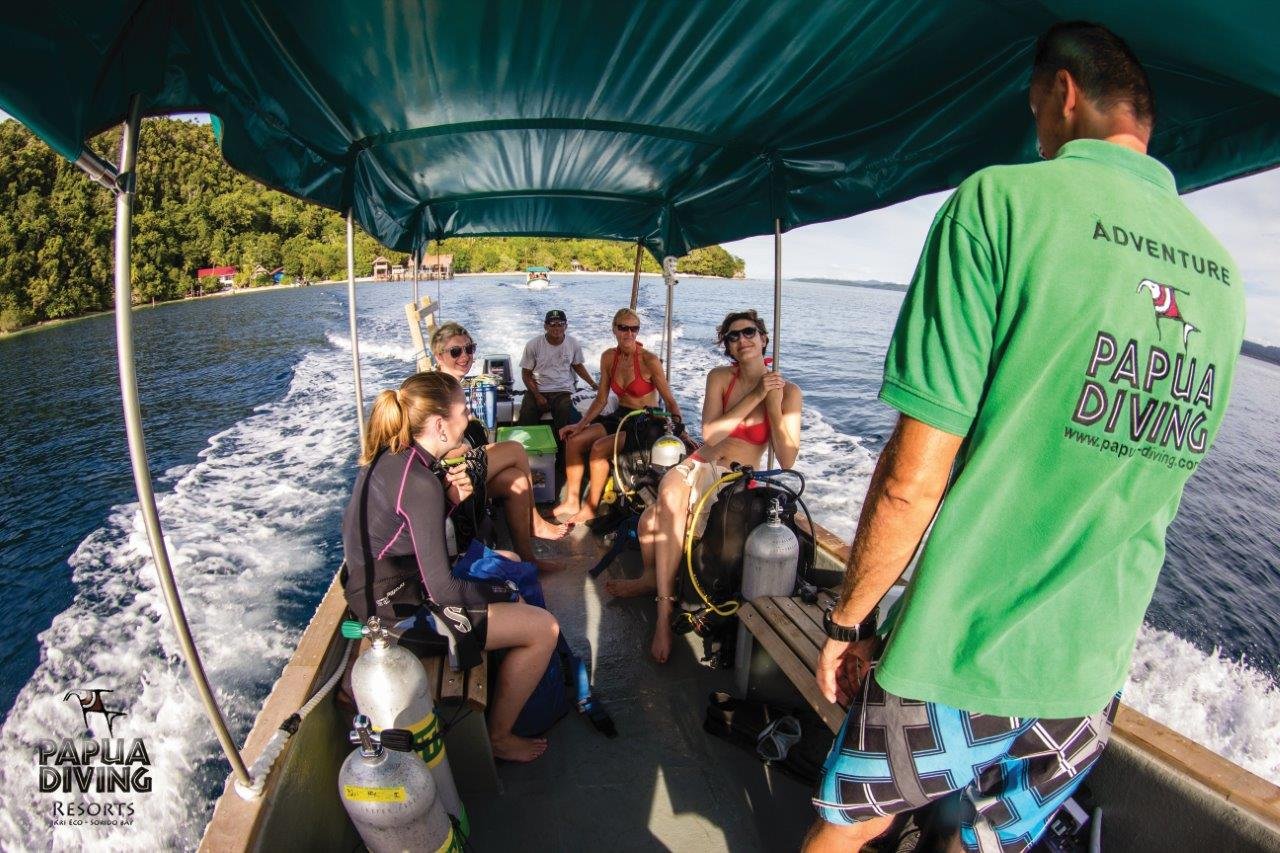
Sardines
Only 10 mins from Kri Island, this submerged reef with a reef top at 5 metres, contains a very high biomass, one of the highest in Raja Ampat.Sardines reef is quite simply one of the best reef dives in the world, where divers witness the phenomenal diversity of Raja Ampat at full force. Where the current strikes this offshore reef and splits, a dazzling array of fish congregate, audibly swarming fusiliers spin above, pursued by huge giant trevallies, packs of Bluefin jacks and huge Spanish mackerels. Batfish gather in the hundreds, while multitudes of schooling bannerfish feed in the current. Grey reef sharks, blacktips and whitetips can also be seen along with the wobbegong waiting in ambush on the sea floor. Coral bommies dot the slope covered with many colourful species of dendronephya soft corals and up to three separate species of Pygmy seahorses can be found amongst them. On the current-swept reef top a resident school of thirty massive bumphead parrotfish crunch on the coral, keeping the divers company on a safety stop who hang from their reef-hooks like kites in the wind. Upon surfacing, many divers comment that this is the best dive they have ever done!! Photographers love this dive site and have to return to change from wide angle to macro!

Manta Sandy
Only 25 mins from Kri Island, this sandy slope is famous for its Manta Rays. It is a cleaning station where they come in to get cleaned.If the many reefs are not enough this area also boasts some of the best manta diving in the world! There are two main manta sites just half an hour away. One, Manta Sandy, is a cleaning station where up to 10 mantas can be seen vying for a position above the two rocks where wrasses clean these giants. We get enormous 4 meter wide black mantas, looking like a negative photographic image, their gills are highlighted in white, along with the other more common white-bellied variety. Another site nearby, Manta Slope, mantas circle above in the sun while divers hook onto the reef while the current arcs overhead and down the steep slope below. Divers can be caught unaware while giant demonic-looking black mantas cruise by behind them. This trip is out of our 10km range, but is offered once a week without any fuel surcharges!

The Passage
As seen in many articles, including recently by David Doubilet in the Sept 2007 National Geographic, the passage is a completely unique dive site. The narrow canyon 40 minutes away between Gam and Waigeo can be described as river flowing between the two Islands, but also a marine environment, a haven of peculiar and unique microhabitats.This is a place where experienced divers and photographers enjoy the utterly different experience of diving in this truly one-of-a-kind location. Above water the sheer limestone cliffs make this a place where the sightseeing above water is also excessively beautiful. Guests combine this trip visiting the labyrinthine Hidden Bay, a maze of towering islets, and Kabui Bay where literally hundreds of mushroom islands create staggering scenery. This trip is out of our 10km range, but is offered once a week without any fuel surcharges!



